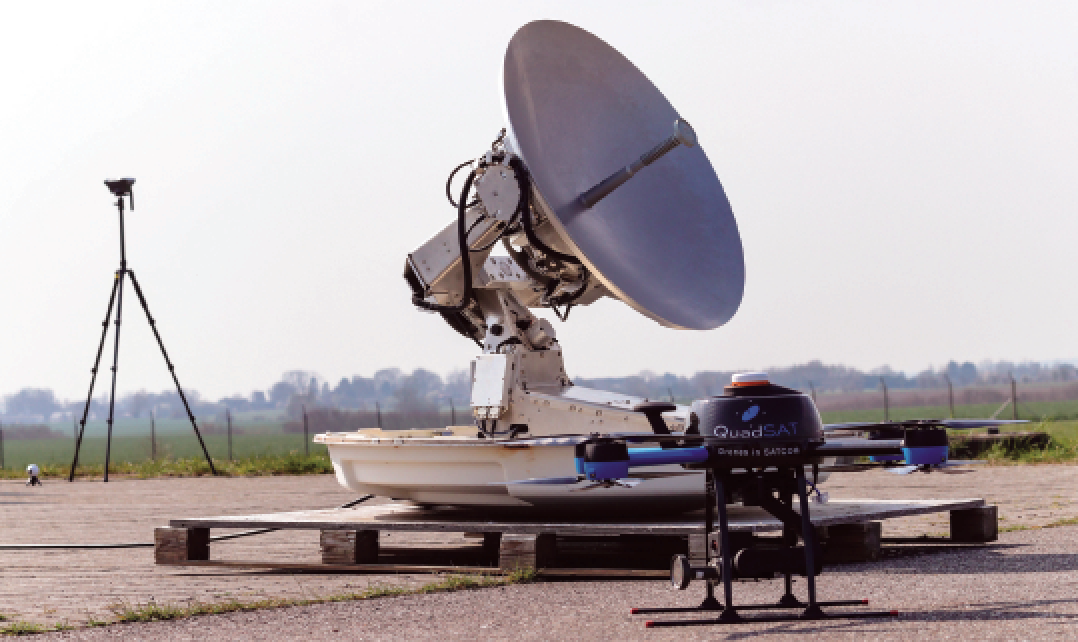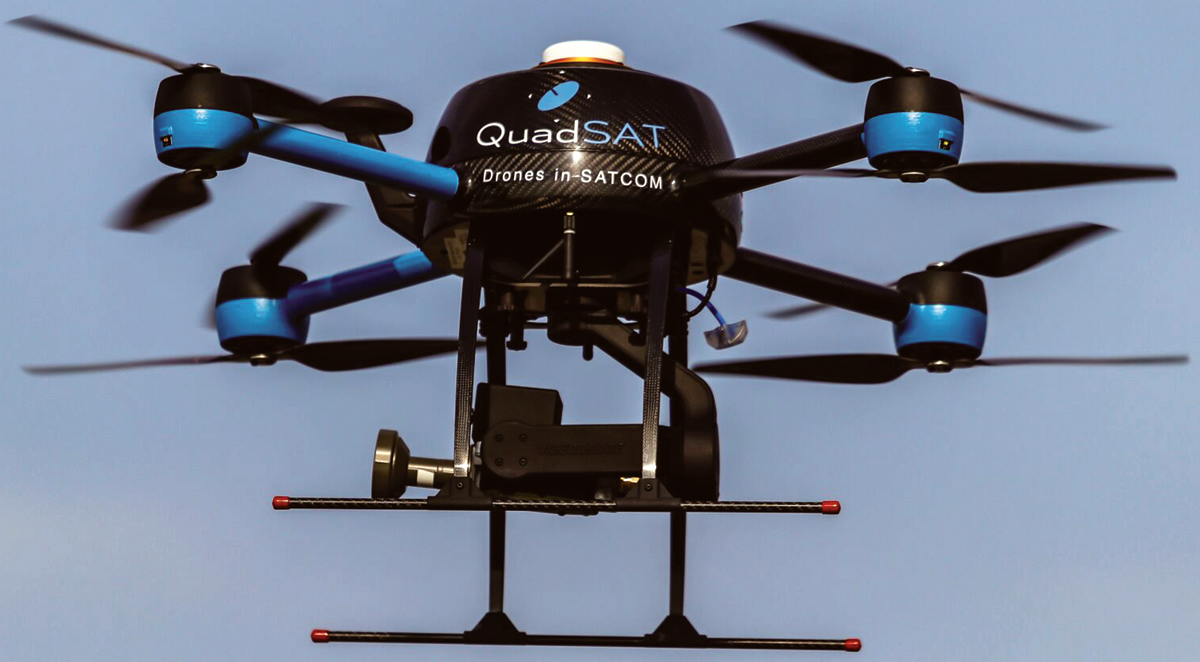Space is becoming increasingly active, with many services vying for finite resources. We’re also seeing the highest need for connectivity than ever before. With satellite communications offering a wide-ranging service (both in terms of location and service bandwidth) many are turning to integrate its capabilities into workflows.

Whereas SATCOM was once relied upon for tasks such as location, meteorological and broadcast delivery services, it is now being developed and used for much more. Many organisations are turning to SATCOM to deliver internet services to passengers, enabling cloud workflows for staff and enabling access to the Internet of Things (IoT) for customers.
With an increased reliance on SATCOM services, how can the industry maintain low-cost services without compromising quality? With more and more antennas receiving RF signals, how can users prevent the negative effects of Radio Frequency Interference (RFI)?
What Causes RFI?
Human error is a common cause of RF interference; often terminals are managed by professionals who are not certified within satellite communications. Managing the correct satellite point, as well as power and polarization, is technically challenging and can have severe repercussions to services if managed incorrectly.
The correct setup is, of course, important; however frequent testing and calibration can highlight any discrepancies and allow the user to mitigate its effects. A single anomaly has the potential to disrupt services for both the user and others using the same environment. Not only is this an inconvenience to users; service disruption has the potential to raise safety concerns.

SATCOM is often used to deliver services to some of the most remote locations on Earth — what happens if an antenna on a ship is transmitting and receiving RF signals inaccurately? There is potential for hundreds of people to be isolated without a communication infrastructure.
RFI has long been identified as an important problem facing the SATCOM industry. With the increasing use of satellites, alongside the sharing of spectrum with 5G, there is increasing complexity in addressing RFI. RFI has the potential to damage the satellite communication industry’s dependability and its resulting reputation. RF Interference ultimately results in the degradation of signal, which translates into a break in connectivity.
Of course, one RFI incident can affect numerous users at one time, making both interference mitigation and prevention important. Teleports play a critical role in service delivery. It has never been more important for antennas to be accurately tested and calibrated to prevent signal degradation, both in the uplink and downlink chain. Mis-pointing a terminal can cause signal degradation for both the user and other nearby users using similar frequencies. With an increasing number of both satellites and ground stations using the limited range of spectrum, users are at an increased risk of causing RF interference.
Guaranteeing Quality Equipment
Another common cause of interference is the equipment itself. This can be caused by various faults or issues, ranging from poor quality equipment to difficulties in infrastructure. To roll out connectivity, some operators and end users have turned to less expensive equipment to reduce costs. However, this results in more signal disturbance. Low-quality equipment runs the risk of inconsistent transmissions, both in uplink and downlink chains. This can be caused by a lack of consistency and accuracy.

Pairing high-quality equipment with consistent testing and calibration reduces the risk of RFI through delivering a consistent, accurate and robust service. Striving for the best service possible, many operators choose to test equipment and grant type-approvals to identify high-quality equipment that is suitable for use.
Industry protocol SOMAP (Satellite Operator’s Minimum Antenna Performance Requirements) has been developed by the leading satellite operators, SES, Eutelsat, Intelsat, Inmarsat and AsiaSat to establish an industry requirement for equipment quality. Through agreeing to use SOMAP approved equipment, operators are using equipment of the correct quality and therefore reducing the risk of RFI and its resulting service disruption.
Operators are well aware that the SATCOM industry must work collaboratively to minimize RFI and remain reliable to ensure that it stays as a leading form of connectivity. Once a SOMAP compliant type approval has been granted, other operators can use the type approval without having to run their own tests. This reduces duplication, allowing operators to select high-quality equipment without having to consider the additional costs of type-approval testing.
How is RFI Managed in the Field?
Although an obligatory part of SATCOM use, testing in the field is currently expensive and results in significant downtime. Testing must be done while the antenna is mobile (i.e., a sailing ship or moving aircraft) to enable accurate testing results.
To deliver these testing conditions, service operators are often required to instate additional journeys to accommodate testing and calibration. This is a costly task which, at a minimum, must be undertaken annually. Calibration is often performed at more regular intervals, which again requires the expense of deployment. However, this is not the only cost associated with testing.
Testing and calibration must be performed by specialist satellite engineers to ensure that the results are of a high-quality and reflect the situation accurately. This soon becomes expensive, with satellite engineers needing to be transported to remote areas of the world to perform testing.
Often vessels must not be operational during testing times, with this downtime contributing to the cost implications of the task. Of course, testing and calibration is absolutely necessary, but how can operators and service providers reduce the financial burden while combating RFI and maintaining quality services?
New Technologies to Prevent RFI
New technologies must look into addressing the costly nature of current testing systems. Technologies that minimize downtime and increase accuracy are required to develop the process of testing and calibrating antennas to drastically reduce RFI whilst improving cost efficiencies.
At QuadSAT, the company is developing Unmanned Aerial Systems (UAS) — drones —to improve cost efficiency and are currently establishing a drone technology that can mimic an orbiting satellite. This will allow testing and calibration to be completed on static vessels, i.e., a docked ship or a grounded aircraft, saving service providers both time and money.
The technology is currently undergoing strict testing; however, early tests are demonstrating accurate results. The drone tech won’t just be used by service managers in the field; the company is anticipating that its cost saving potential will be used by operators in their equipment approval process. QuadSAT’s aim is to use UAS technology to deliver both cost-effective antenna testing and calibration in the field as well as antenna type approvals.
This technology has a huge potential to drastically reduce costs, allowing operators and service managers to perform testing and calibration more frequently, resulting in reduced RFI issues caused by antenna issues. By reducing the cost of testing, the industry will become more accessible and suitable for more customers as well as more robust and reliable.
The SATCOM Industry Must Have a Cost-Efficient Antenna Testing Solution
The satellite industry offers flexibility for communications. With other forms of connectivity on the rise, SATCOM can compete through offering a wide-ranging service, both geographically and in the terms of bandwidth. However, service delivery must be reliable for organisations and consumers to integrate SATCOM into their everyday workflows.
RFI has long been a threat to the industry’s dependability; as more people are using space and turning to SATCOM, it continues to require operators and service managers to actively avoid RFI. Operators have seen the importance of industry-wide compliance, with SOMAP having been adopted by many of the largest companies. Purchasing and operating high-quality antennas reduces the risk of RFI and its resulting downtime. This paired with regular testing and calibration will of course improve efficiencies and accuracy in both uplink and downlink chains, resulting in a seamless and robust service.
However, this does come at a cost. For SATCOM to remain relevant it must remain financially accessible. Purchasing high-quality equipment and integrating frequent testing and calibration can seem unattainable.
This is where drone technology can offer a low-cost solution to both testing and calibration and the sourcing of equipment. QuadSAT’s objective is to deliver in-field antenna testing as well as equipment testing for type-approvals. With its high accuracy and low operational costs, it aims to equip operators and service managers with affordable technology which can improve efficiency and service delivery whilst combating RFI.
The industry must embrace cost-effective testing options to improve the durability of service delivery whilst maintaining the industry’s reputation as a financially accessible form of connectivity.

